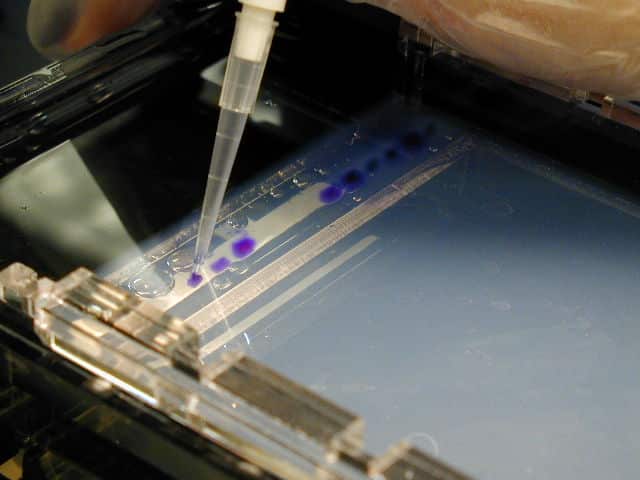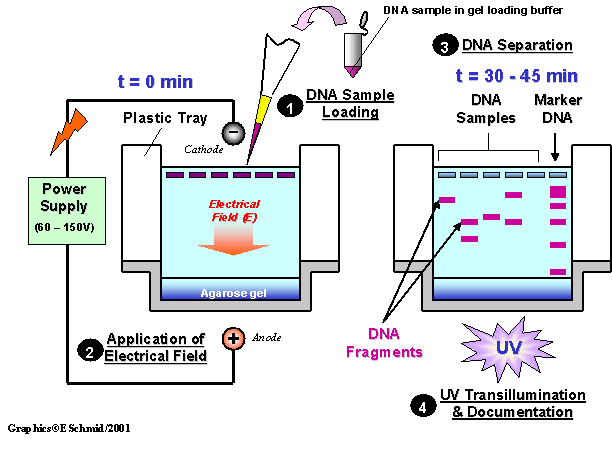
Purpose: To separate DNA molecules according to their size. This can be done for forensic purposes, to look for disease in specific genes or paternity testing.
Brief overview: DNA is negatively charged, in order to separate it by size it is put in a solution with a current running through it that pulls the negatively charged DNA to the opposite end.
Larger pieces of DNA encounter more resistance in the solution and therefore don’t move as far as smaller segments after the same amount of time.
Once the electrical current has been run, a dye is added in order to see the bands of DNA (also known as lanes), and based on their location the length of the DNA is known (measured in base pairs).
How it works
The process consists of restriction enzymes, a comb, a buffer, aragose gel, DNA, a size standard, and electrophoresis box
Vocabulary
Buffer: Polar solution that allows electrical charges to flow through the gel.
Loading buffer: A tracking dye primarily made of Bromophenol Blue in a 50% glycerol solution (but could be Xylene Cyanol and Sucrose). The glycerol thickens the DNA meaning it will sink in the gel instead of floating away in the buffer.
Restriction Enzymes: Bacteria that cut DNA at specific sequences.
Lanes: Bands of DNA that form in the gel
Basic Steps
- Aragonese and the buffer are mixed together and microwaved to create the gel. It is poured into a mold and has a “comb” placed in it to make holes for the DNA to be inserted. Once it has cooled the comb is removed.

- The gel is then placed in the gel electrophoresis box and buffer solution is poured onto it. The buffer conducts the current.
- In order to prepare the DNA restriction enzymes must be used.
- DNA is inserted into the holes (as well as the size standard) using a micropipette. The size standard already contains a loading buffer but the DNA samples require it. The loading buffer stains the DNA and makes it thicker.
- The electrical current is then turned on. The side where the DNA is placed is negatively charged and the opposite side is positive. The phosphate backbone in the DNA is negative pulling it towards the positive side. The DNA repels the negative charge initiating movement.
